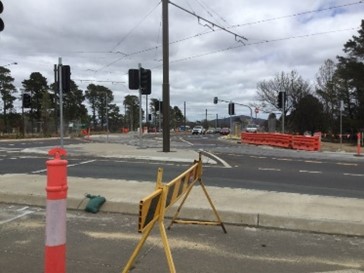Preparation of this document has been prompted by recent events that affect whether and how public transport may be provided for Canberra in the future, given the 2016 election promise of Light Rail Stage 2 (LRS2), newly published figures for light rail in the ACT Budget 2018-19 and the inquiry into LRS2 by the Joint Standing Committee for National Capital and External Territories (JSCNCET).
Canberra’s light rail is a giant ‘black hole’, a bottomless money pit, which will suck in vast amounts of taxpayer funds, at great and unsustainable opportunity costs and cause serious disruption to the social fabric of Canberra. Additionally, it will concentrate and monopolise development funds to the detriment, distortion and disruption of a balanced and equitable development of Canberra as a whole.
The perceived tram network for Canberra was born out of political expediency after the 2012 election and sustained by the ideology and political power of an ACT political minority. The city-state of Canberra is in the grip of misguided ideology and its citizens need to realise it soon before much more damage is done to our beautiful city.
The detrimental effect of Light Rail Stage 1 (LRS1; Gungahlin-Civic) will be bad enough but now we have the prospect of LRS2 (Civic-Woden). LRS2 is and should be seriously in doubt given that it was nothing more than an uncosted 2016 election promise to voters south of the lake.
In early Government reports (pre-LRS1), a Bus Rapid Transit (BRT) network was shown to be twice as effective as light rail at half the cost but was rejected by the Government in favour of trams. Herein, the term BRT is taken to embrace the rapidly developing rail-less technologies of the future.
After some four years of trying to justify LRS1 as having a positive Benefit Cost Ratio (BCR), contrary to the advice of independent analysts and the ACT Auditor-General, the Government does not pretend any longer that light rail is an economic proposition but rather suggests that it “… would look beyond simple benefit cost ratio modelling in making its investment decision and will take into account matters such as it overall vision for Canberra, community sentiment, urban benefits and other factors.” In other words, this Government does not care how much light rail will cost.
Light rail is clearly a far inferior solution than that offered by the future technology of BRT vehicles. Trams are a totally inflexible and obsolescent technology, very limited in coverage for the travelling public, only half the seating capacity of buses, disruptive of traffic flows, no better at reducing traffic congestion and pollution than BRT, already compromising the ACTION bus network and very disruptive of major arteries. It is intended to densify development of corridors yet ignores the fact that BRT could achieve the same development objectives at a fraction of the cost.


